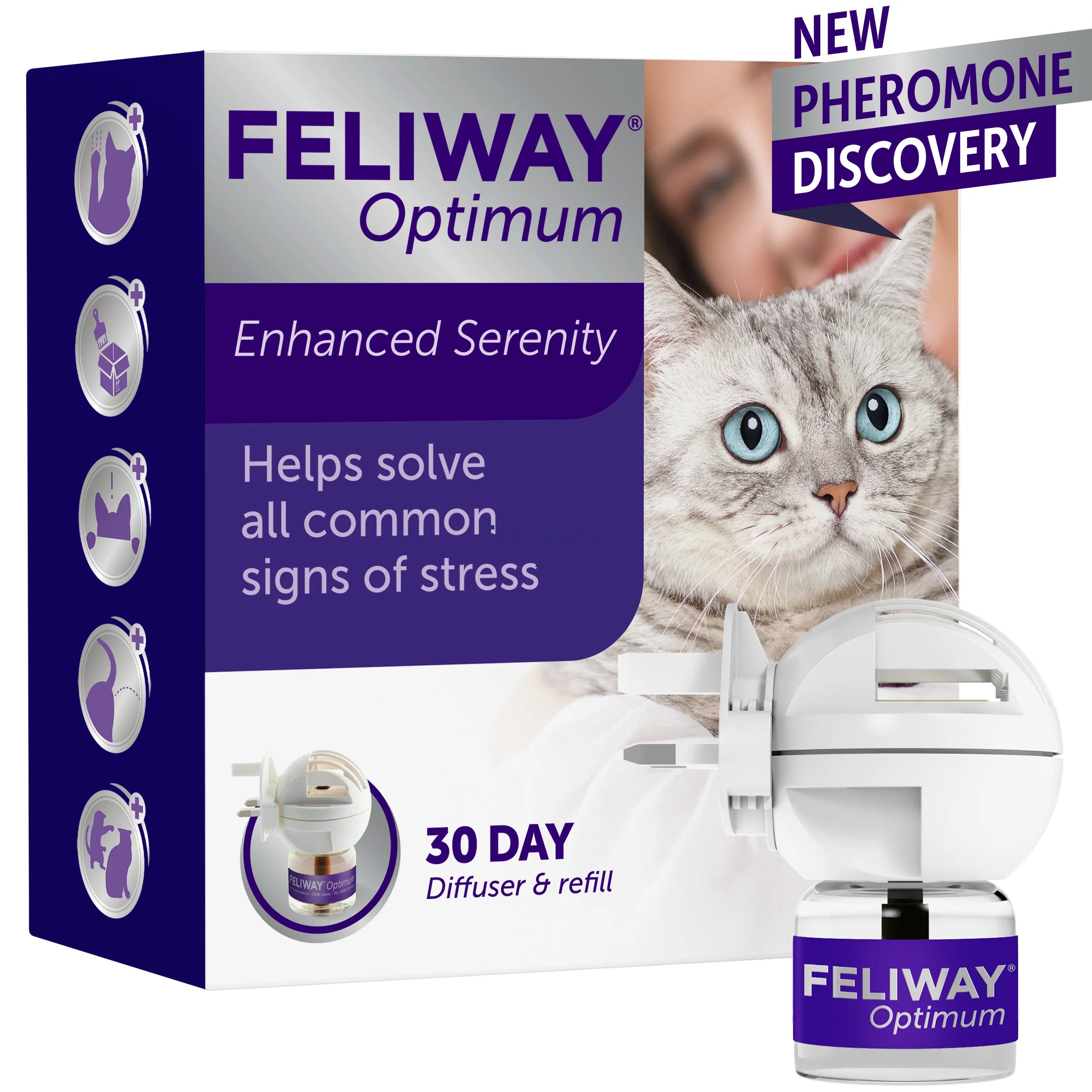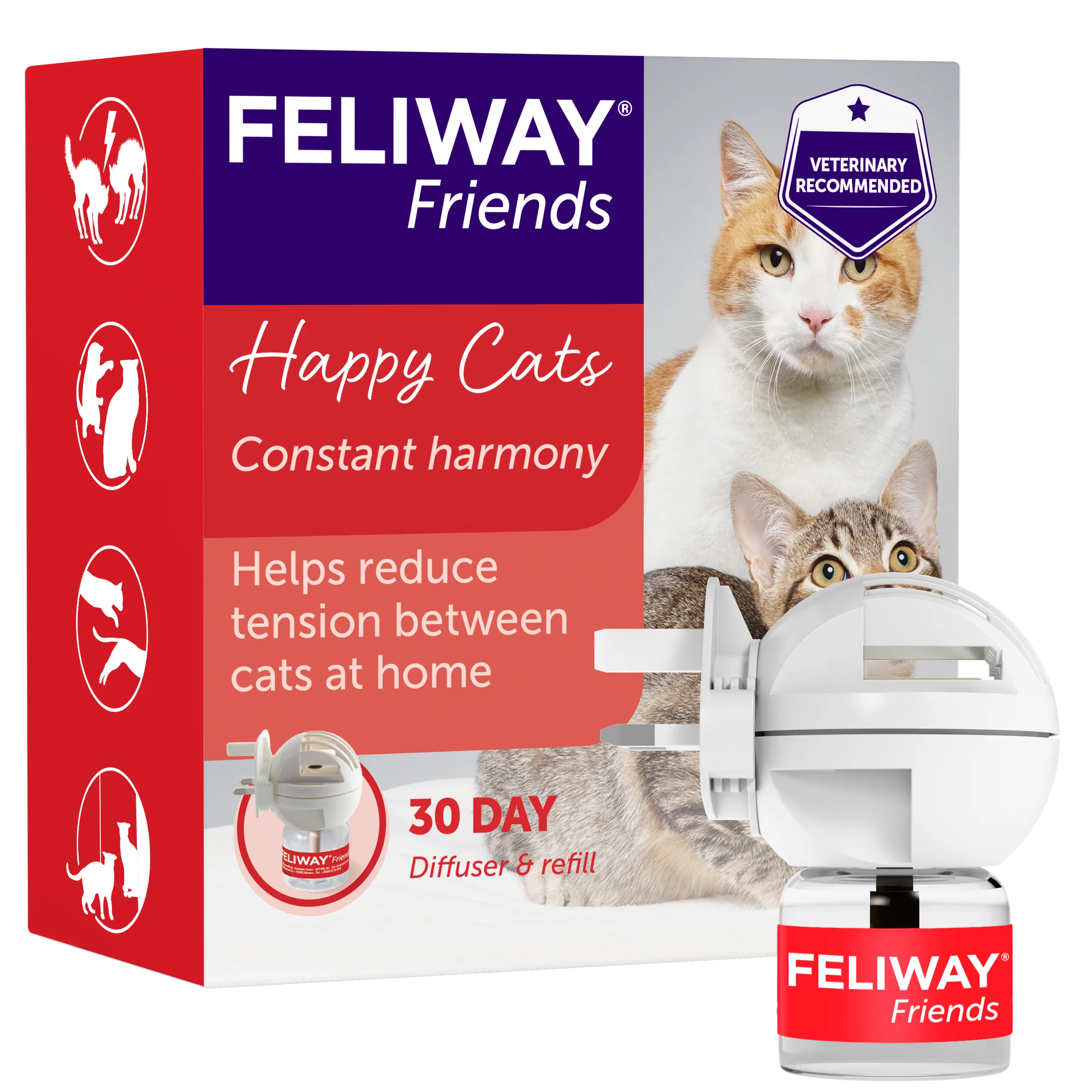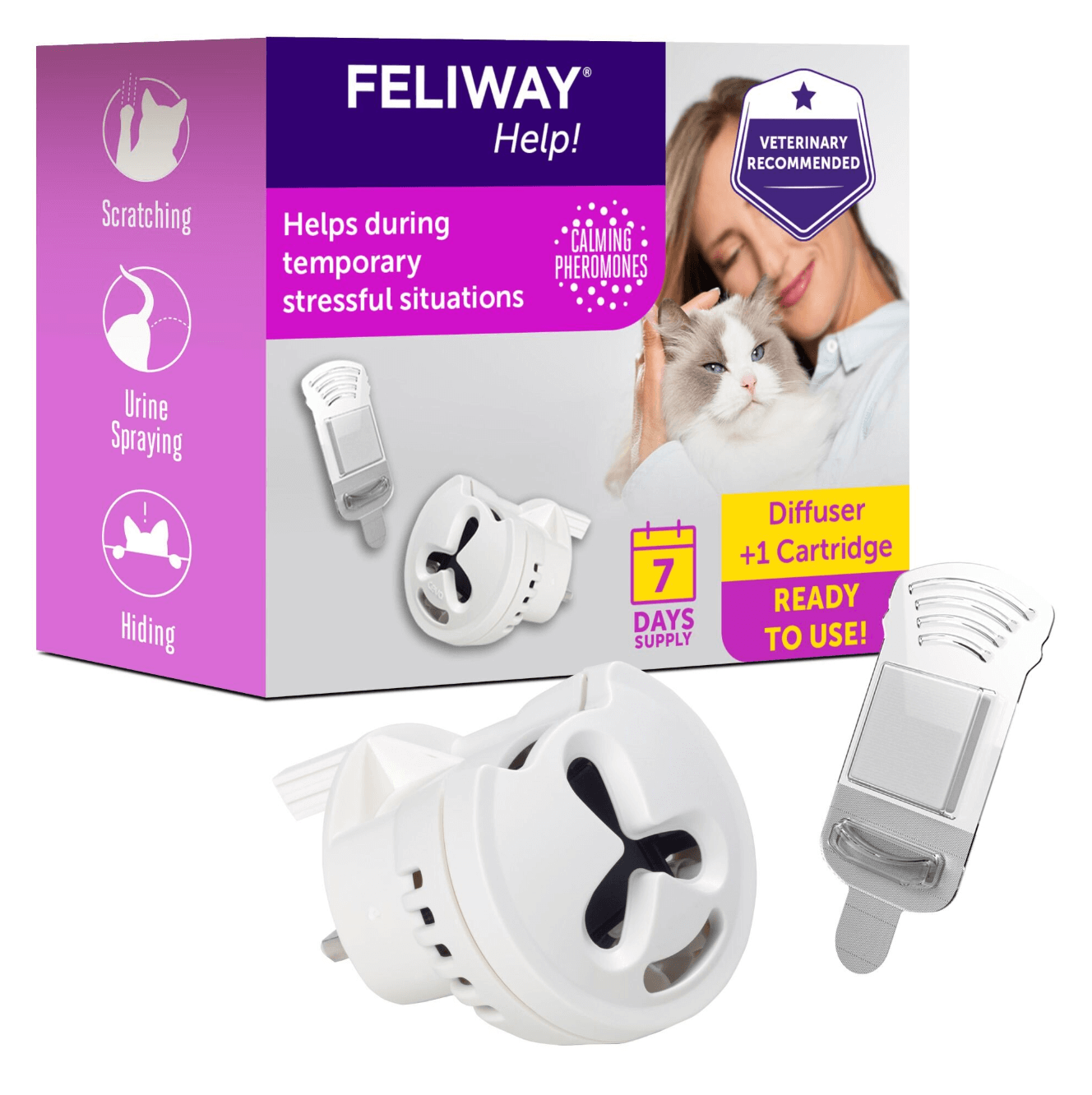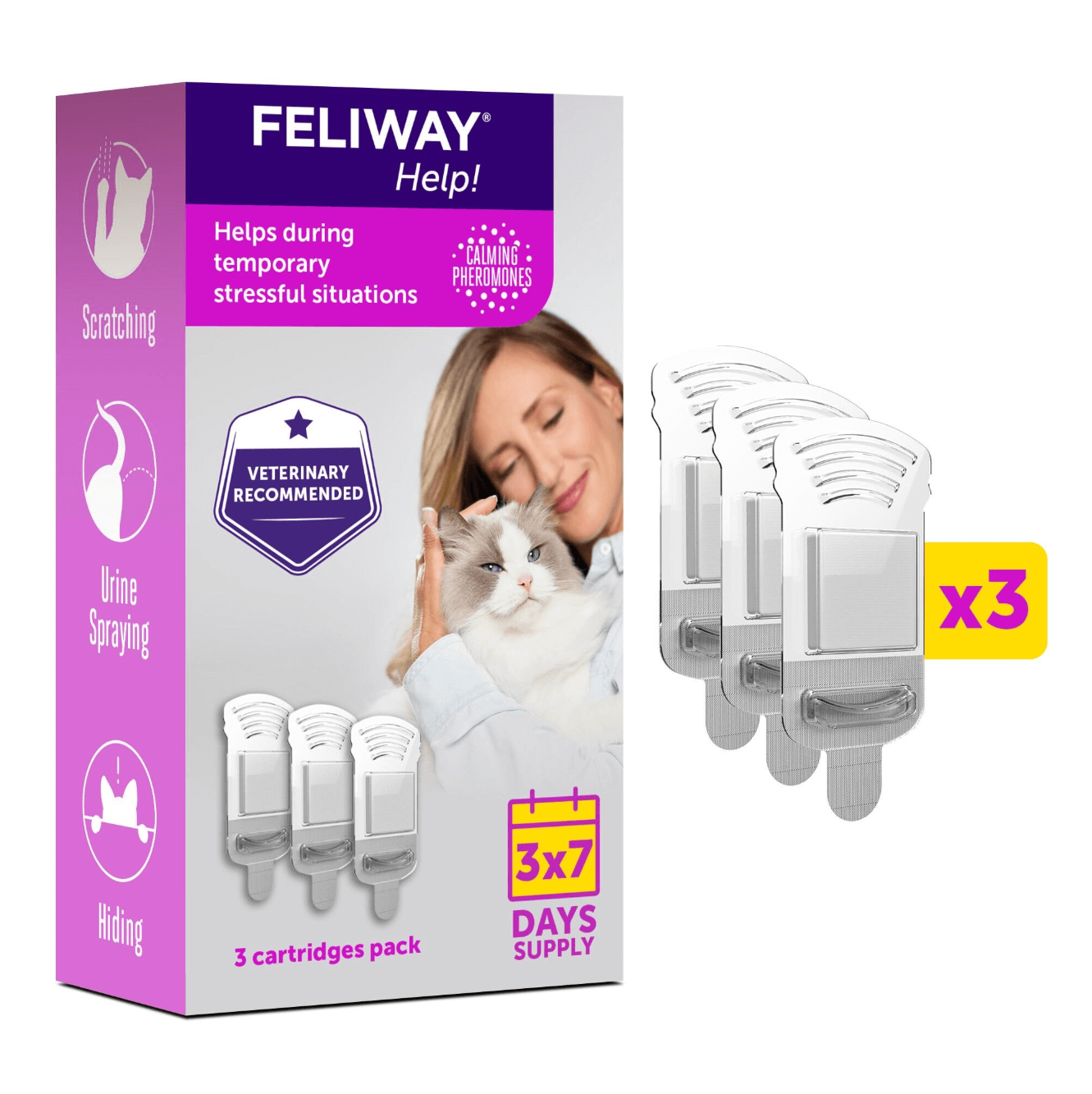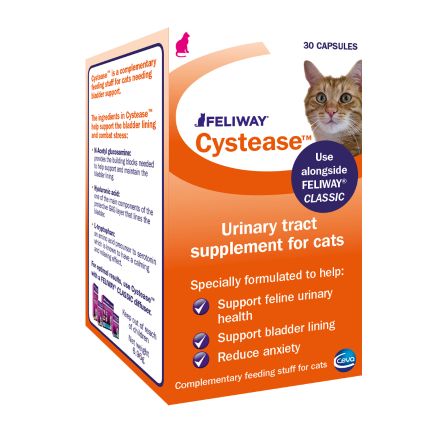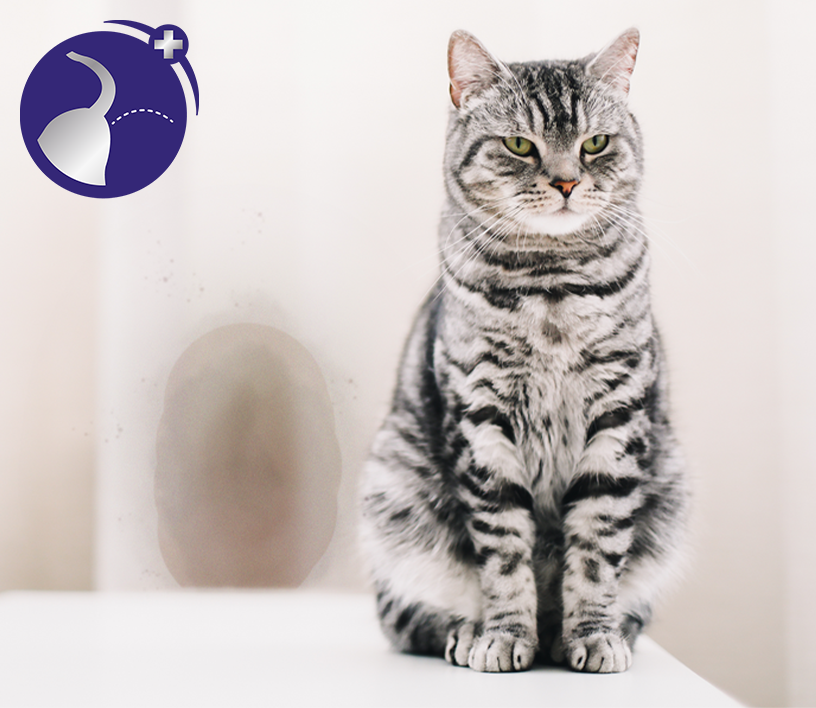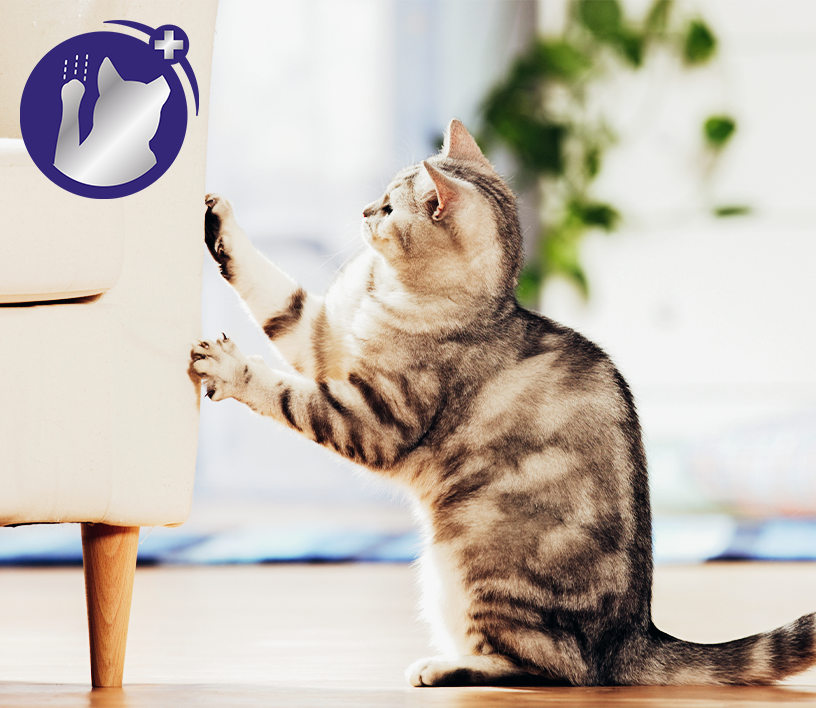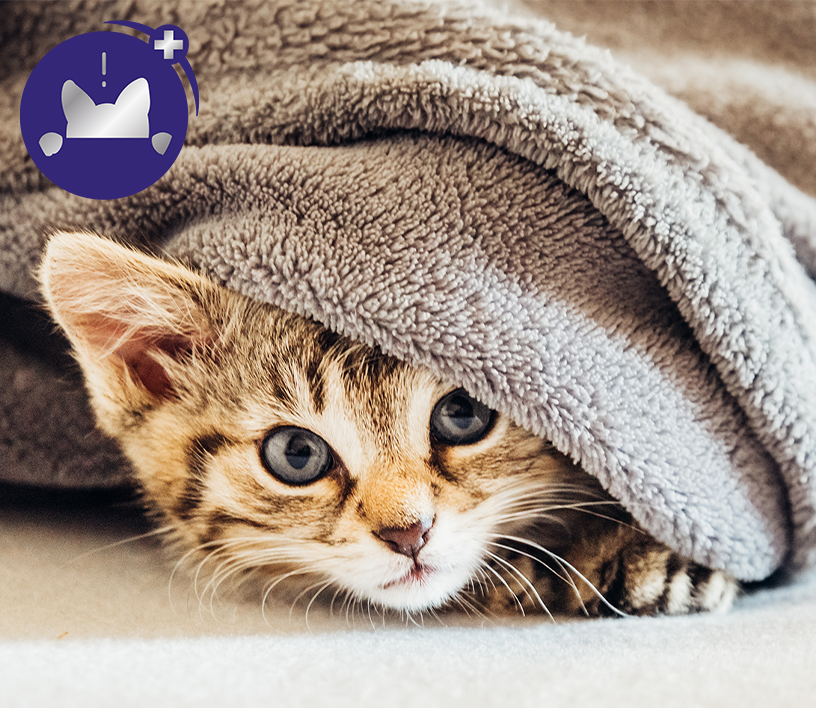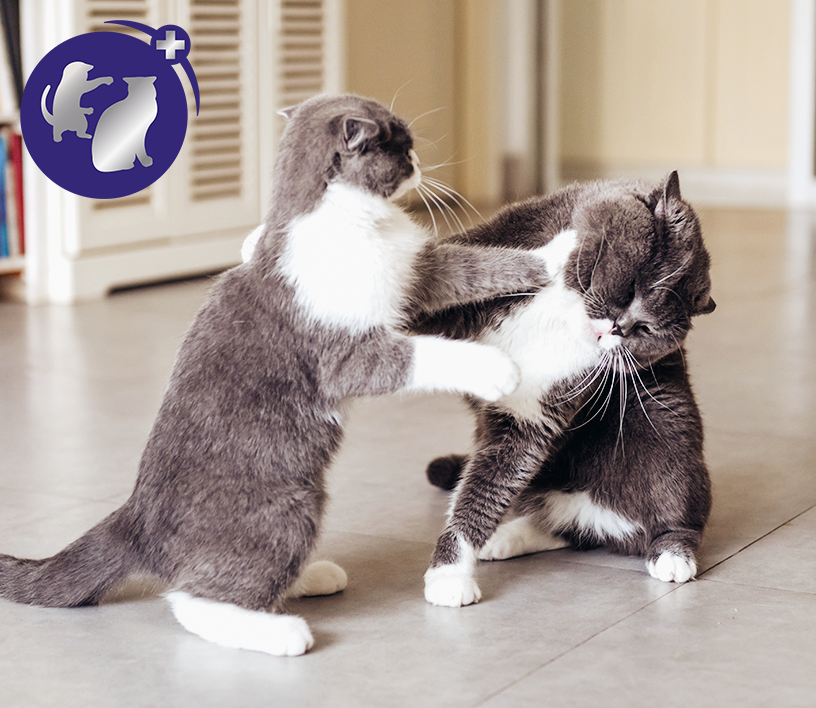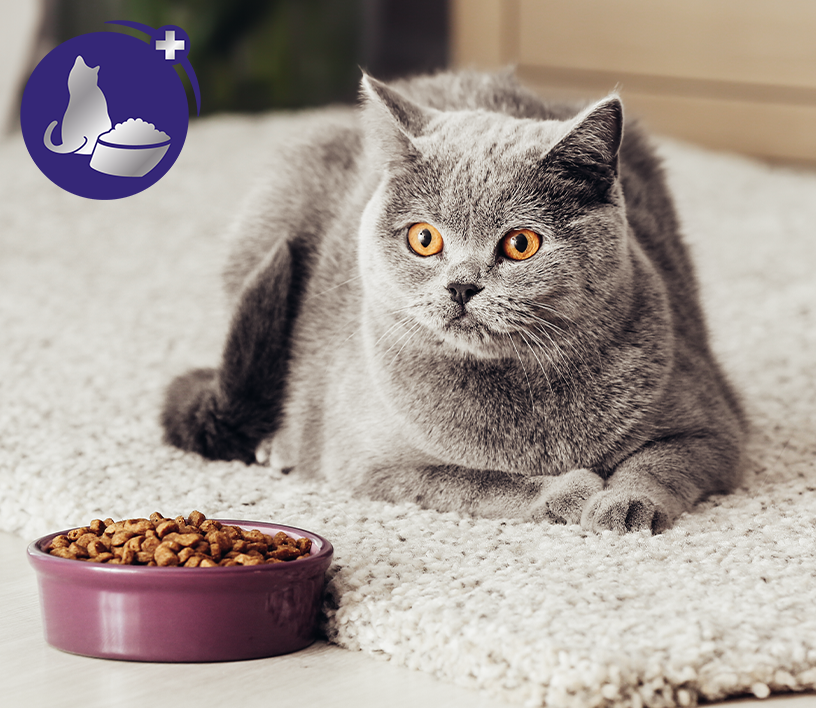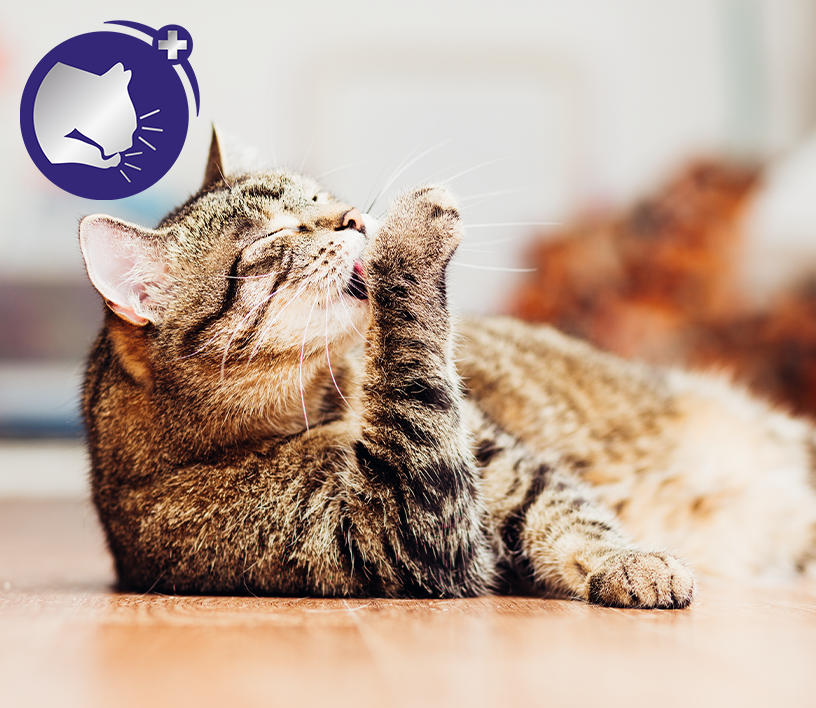CAT PHEROMONES
From body language to vocalization, your cat uses lots of signs and signals to communicate. Though humans may not be able to detect them, cat pheromones are one of the most important methods!
WHAT ARE PHEROMONES?
Pheromones are a type of olfactory chemical communication that cats use to interact with each other and the world around them. Produced by specific glands around their bodies, all felines produce a range of pheromones to send messages to other cats and to influence their behaviour or emotional responses. All cats understand these pheromone signals, regardless of their age!
Cats have many scent glands that release pheromones over their body. Many are found around their face; under the chin, below their ears, forehead, cheeks and around the mouth. Other glands are located near their paw pads, and around female cats' nipples. Finally, pheromones are also present in their urine.

Cats use a variety of behaviours to share or deposit their pheromones. You may have seen your cat:
- Rubbing their head against household objects
- Scratching at objects
- Bumping their head on other cats (or you!), also called 'bunting'
- Rubbing their body against objects and surfaces
- Spraying urine to mark areas in their territory
Does your cat have a favourite place to scratch? Or are they best friends with another cat in your house and 'bunt' each other? These behaviours are linked to pheromones!
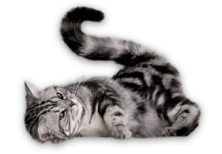
IS YOUR CAT HAPPY?
TAKE THE QUIZ!UNDERSTANDING CATS AND THEIR PHEROMONES
Did you know that facial pheromone secretions alone contain nearly 40 different chemicals - and your cat will know exactly what they mean? The relationship between cats and pheromones can be complex!
How do cats understand these different chemical messages?
All cats have a specific organ called the vomeronasal organ (VNO) to recognise pheromone signals in their environment. The VNO is located in the roof of their mouth. To detect pheromones your cat will open their mouth slightly, pull back their lips and inhale.
The pheromone messages then travel to the VNO via the incisive ducts. You may have seen the entrance to the ducts on the roof of your cat's mouth, just behind their incisor teeth. The 2 small bumps are the entrances called the incisive papillae.
If you've ever seen your cat stand still whilst making a strange expression, they were probably detecting pheromones!
Pheromones pose no risk for your cat; there's no risk of 'overdosing' when using pheromone diffusers for example. Pheromones are not drugs and do not have harmful effects on the body - they simply send a message to your cat! Humans and other animals cannot detect them and are therefore not affected by cat pheromones. They are also odourless!
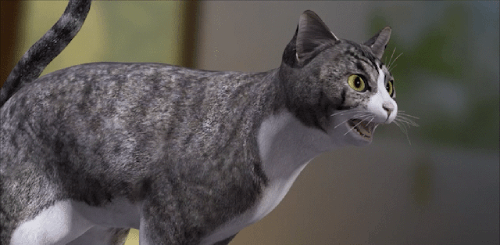
HOW DO PHEROMONES WORK FOR CATS?
Pheromones influence the behaviour, interactions and the emotions of our felines. But how do they work?
Your cat has many reasons to release pheromones. They are useful for:
- Marking their territory
- Identifying and learning about other cats
- Creating familiarity
- Strengthening bonds
- Signalling to sexual partners
- Helping mothers and kittens to bond, recognise each other and live together in harmony
- Self-soothing
- Signalling happiness, contentment and reassurance
- Signalling stress or fear
- And many more!
This means that the pheromones your cat releases will vary, depending on the situation. For example, if your cat encounters a new object that it considers harmless, they may rub their head against that object to mark it as 'safe'.
Pheromones are also used to reduce stress-related behaviour. FELIWAY Classic, for example, uses the same pheromone that cats naturally release to send reassuring messages. They reduce the need for your cat to hide, as well as scratch and urine spray.
Pheromones are a natural way for cats to communicate.
FELIWAY pheromones promote the well-being of cats.
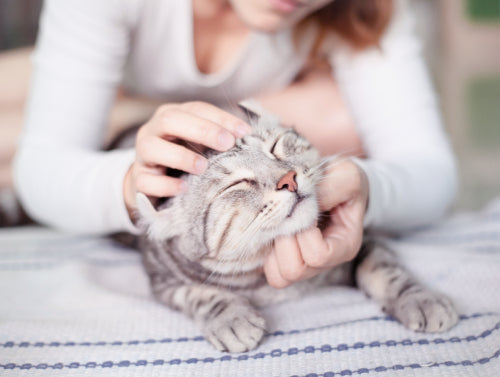
UNDERSTANDING FELINE PHEROMONES
There are many different feline pheromones. Below are 3 pheromones cats use on a daily basis.
FELINE FACIAL PHEROMONES
Your cat's face is a hub for pheromone messaging!
Pheromone producing glands are found on a cat's forehead, chin, cheeks, around the mouth and at the base of their ears. When cats rub their face on objects they are depositing pheromones, marking them as 'safe' or familiar things in their environment. The F3 facial pheromone is a comforting pheromone, which provides a sense of reassurance for cats in their environment. These 'happy messages' help cats to feel secure.
The FELIWAY Classic Diffuser and Spray use the F3 facial pheromone to reduce stress-related signs such as scratching in inappropriate places, urine spraying outside the litter tray, hiding, reduced activity, overgrooming, reduced appetite etc.
The soothing effect of the F3 facial pheromone in FELIWAY Classic can help cats cope with stressful situations, such as moving home, visiting the vet, travel and changes in the home (such as a new baby or another pet).
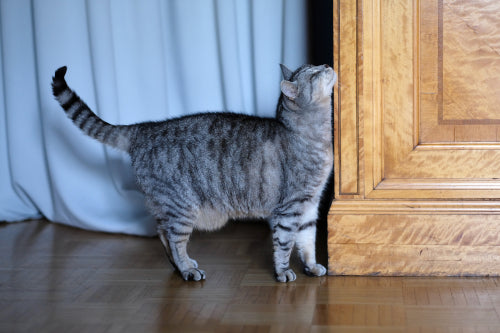
THE DISCOVERY OF A NEW PHEROMONE COMPLEX
The FELIWAY team of scientists has been working for over 25 years to improve our knowledge about how cats communicate. This passion to better understand how to speak 'cat' led to an incredible discovery. With the help of new bioengineering technologies, the team discovered a new Feline Pheromone Complex.
This discovery was made by Professor P. Pageat and his team, who had previously identified the F3 facial pheromone and the cat appeasing pheromone (CAP).
FELIWAY Optimum offers enhanced serenity for cats, calming cats better than ever.
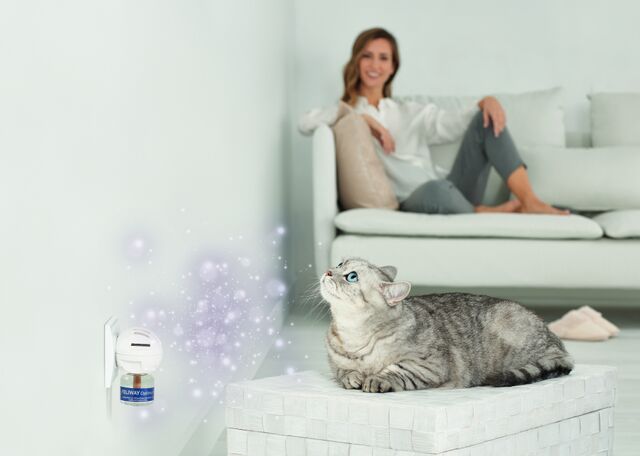
MOTHER CAT PHEROMONES
Pheromones play an important role in ensuring harmony and bonding between a mother cat and her kittens.
A mother cat secretes pheromones from glands around her nipples. This pheromone is called the cat appeasing pheromone (CAP). It helps nuring kittens feel secure and content, and helps them get along with each other. This pheromone can also help a mother cat to identify her kittens if they are separated, and can be used in a wider context to help cats recognise other individuals as being 'familiar' to them.
FELIWAY's scientific teams have demonstrated that this maternal appeasing pheromone can reduce tension and conflict between cats. Thus the use of FELIWAY Friends, by spreading these messages of harmony, allows cats in conflict to be more accepting of each other, reducing aggression and fighting, allowing them to live better
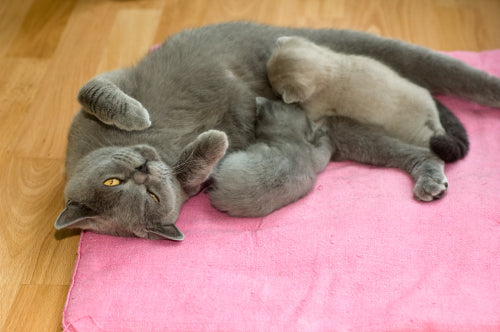
MALE CAT PHEROMONES
Although all cats emit pheromones, male cats can indicate some unique messages.
Pheromones from the rear of a cat (often in the urine) are common to both males and females, and are used to communicate territorial messages, indicate sexual viability and express stress or fear. For this reason, both sexes may urine mark to signal their presence to other cats.
When other cats sniff at urine marks, the pheromones there give them a lot of information , such as who is nearby (and when they were there), their gender and sexual viability. In fact these pheromone markers can help cats avoid conflict, by letting them know when it is a good time to be in the area and when its not, in order to avoid meeting each other physically.
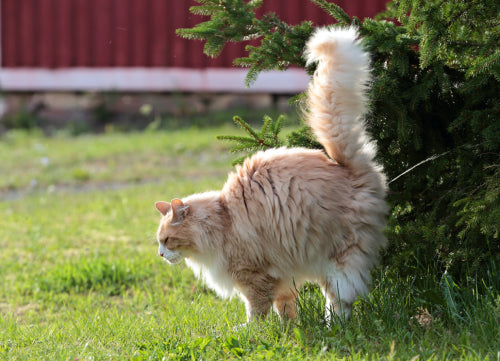
A male cat will also be attracted to the pheromones left by a female in heat. Her pheromone deposits, typically from her cheeks and urine, will indicate when she is ready to mate and looking for a partner.







